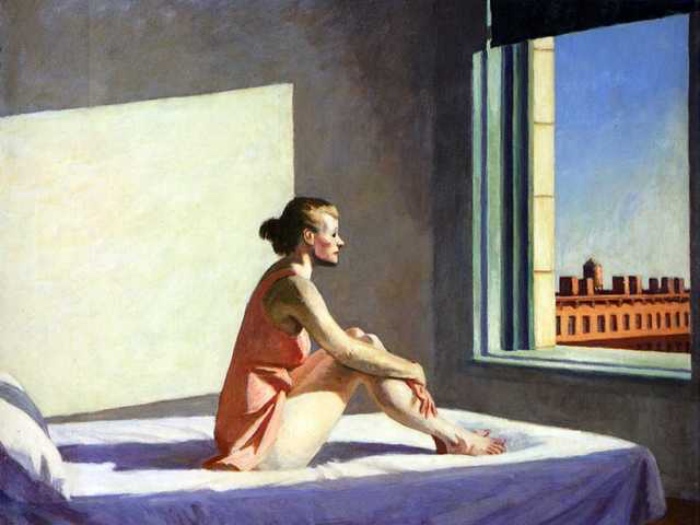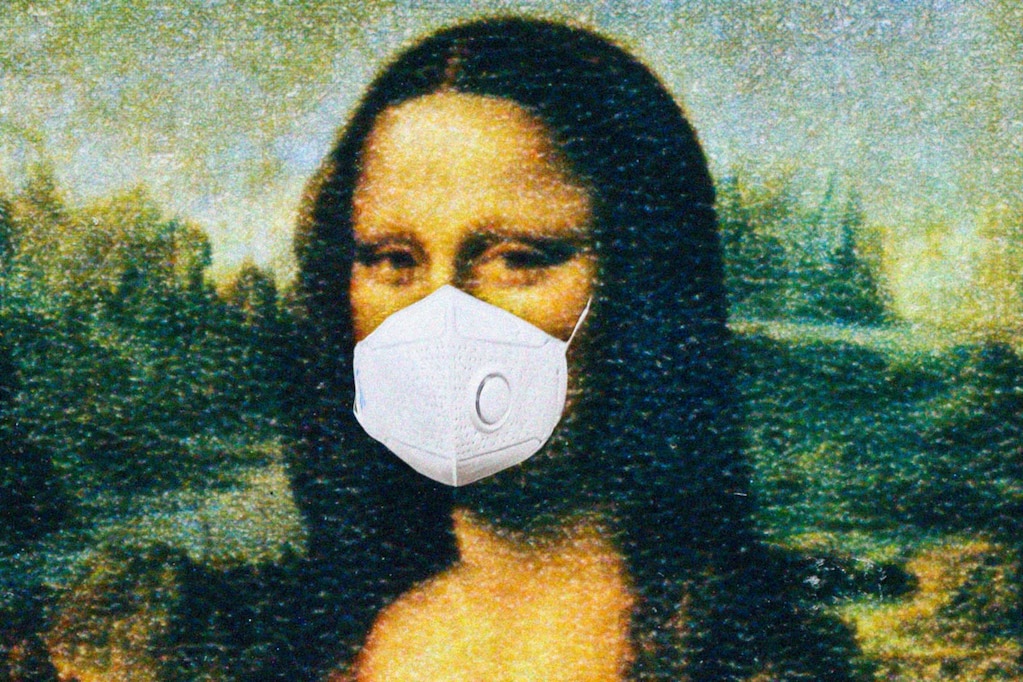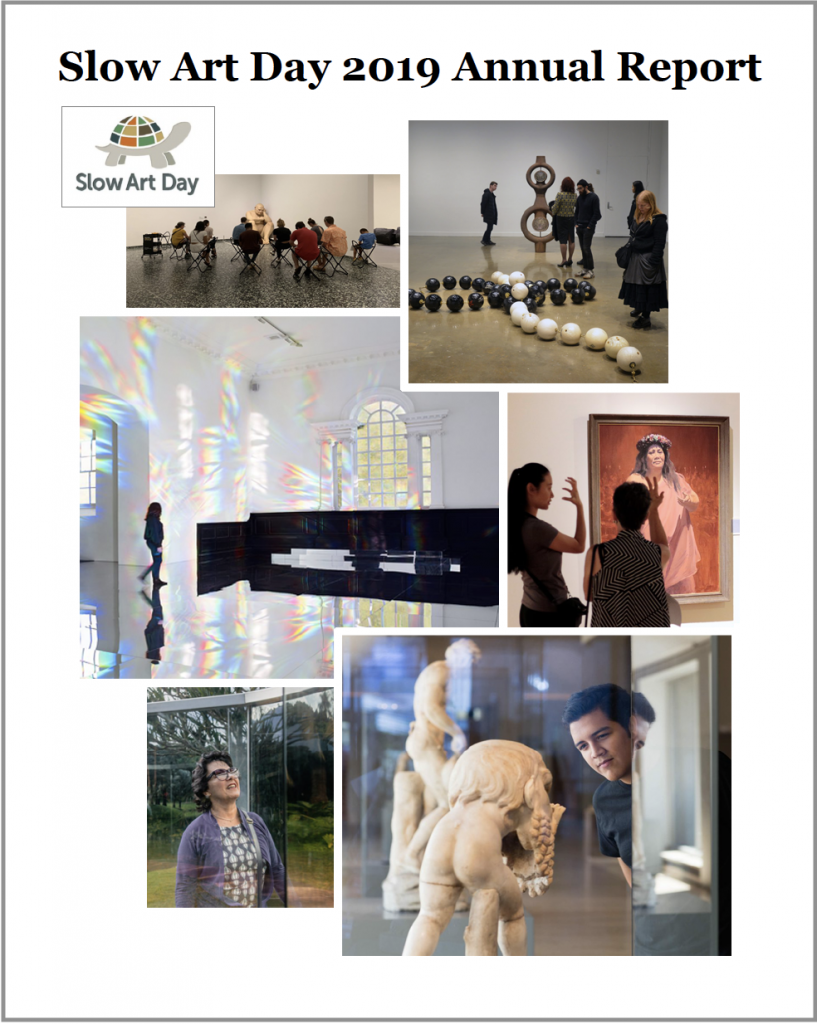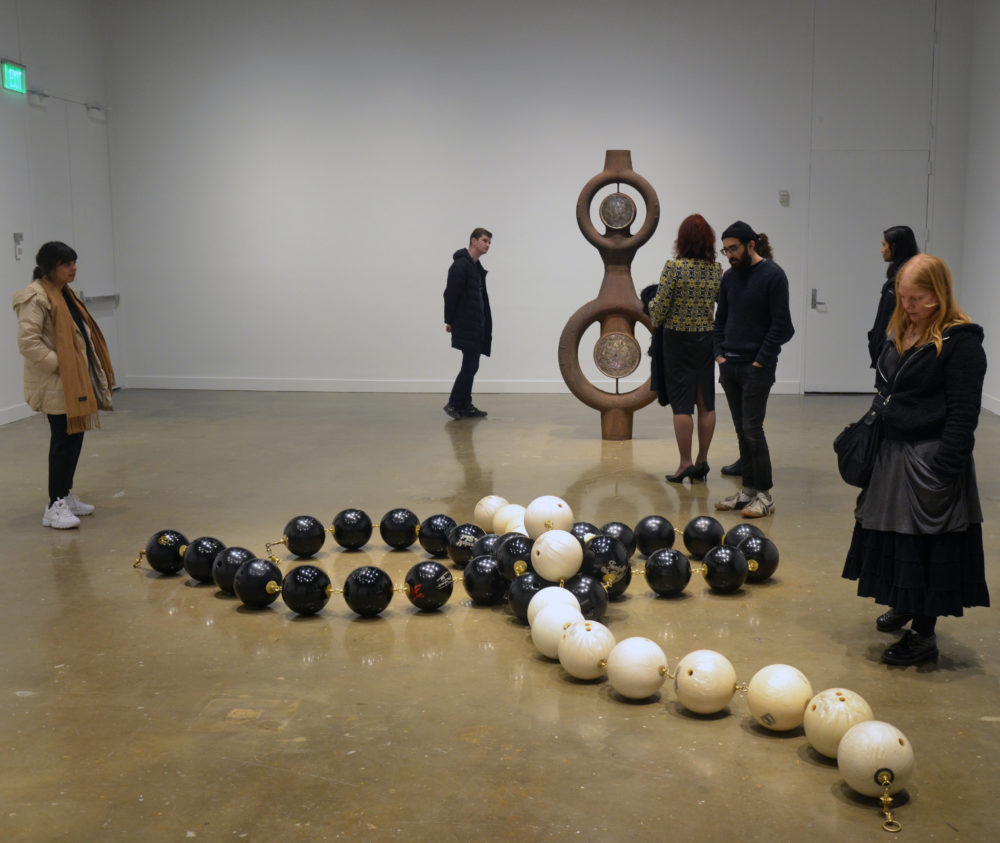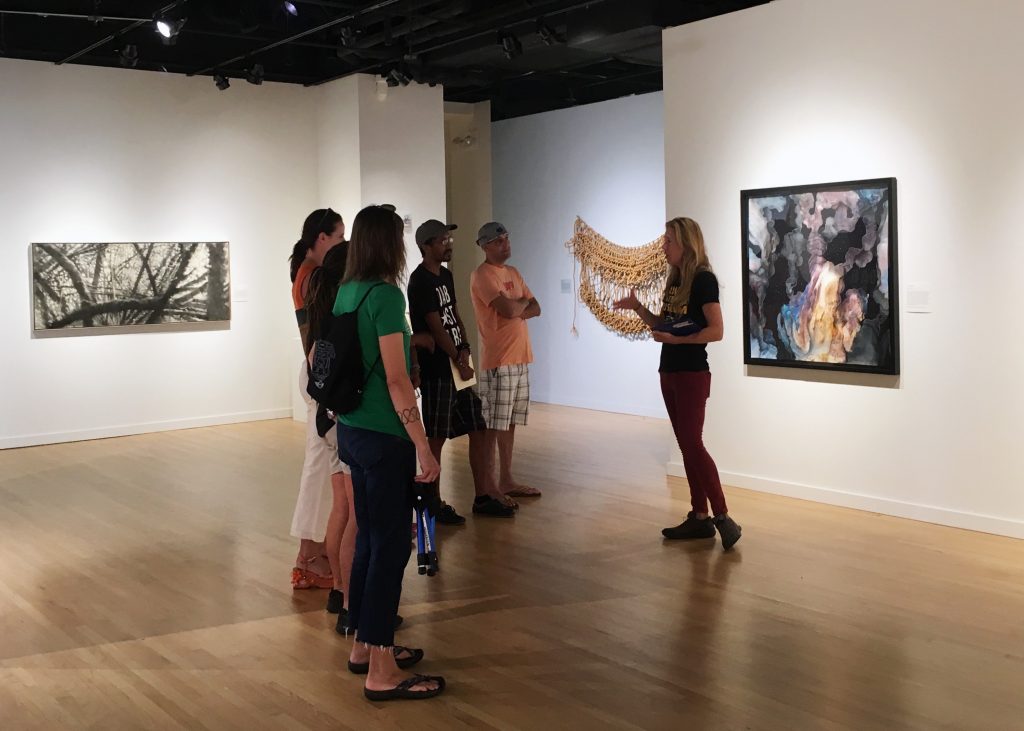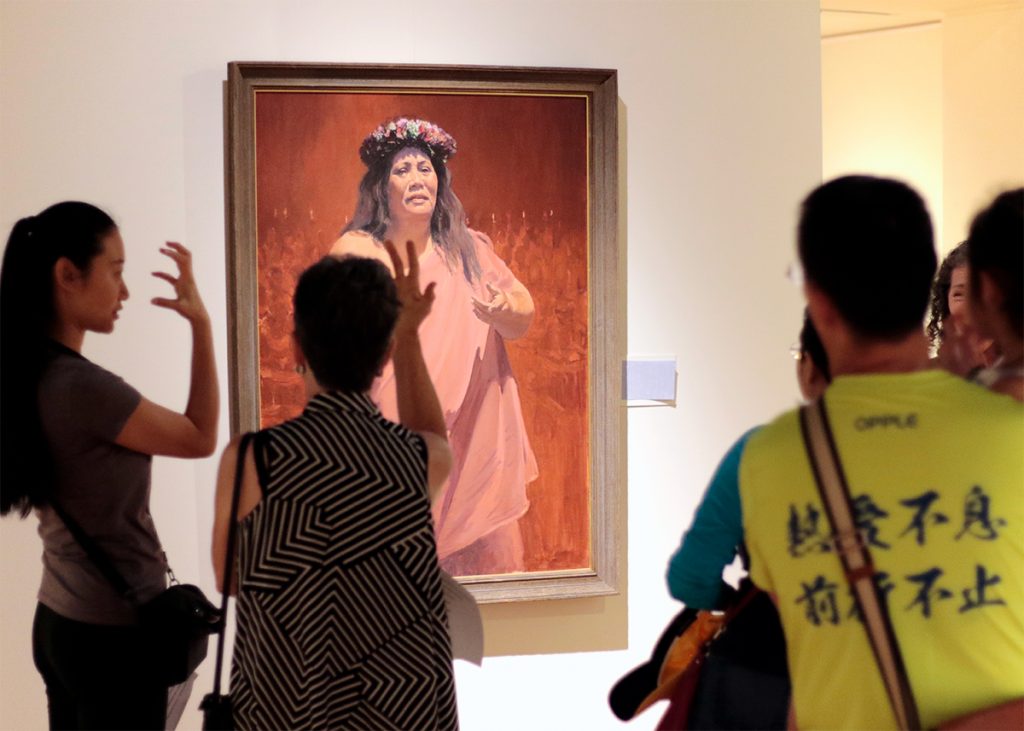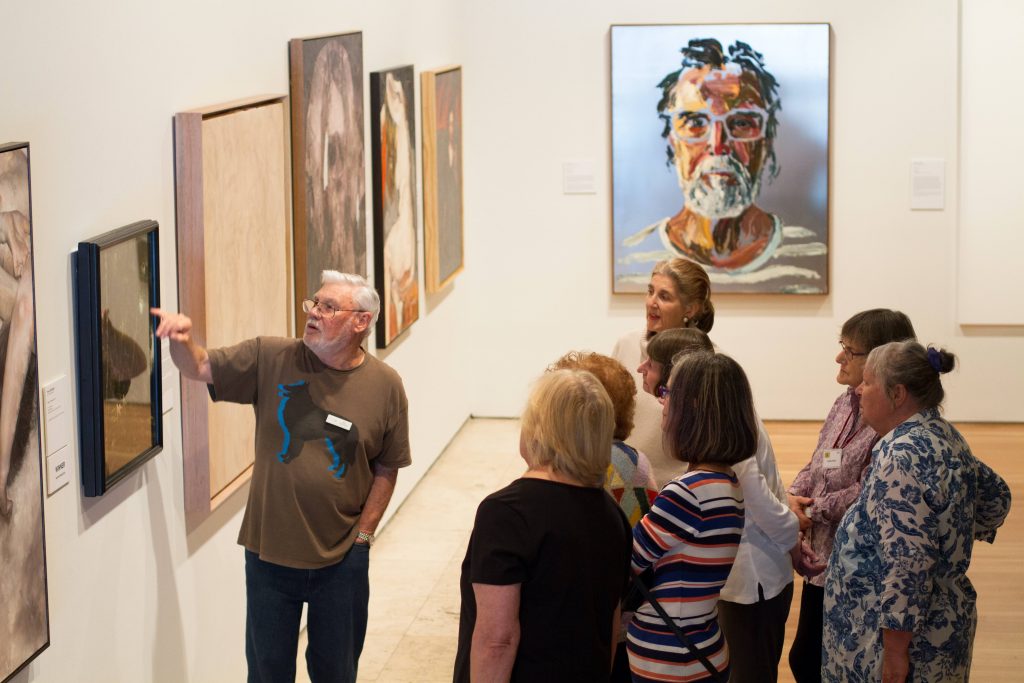The Power Plant Contemporary Art Gallery in Toronto, Canada hosted its fourth Slow Art Day this year – and its first virtual slow looking event given Covid-19.
The virtual event highlighted four artworks from the Winter 2020 exhibitions:
God’s Reptilian Finger by Naufus Ramírez-Figueroa
Cacaxte no. 2 (Sarvelia) by Naufus Ramírez-Figueroa
Spectre (La Teleferica) by Dawit L. Petros
Anxious Audience by Rashid Johnson
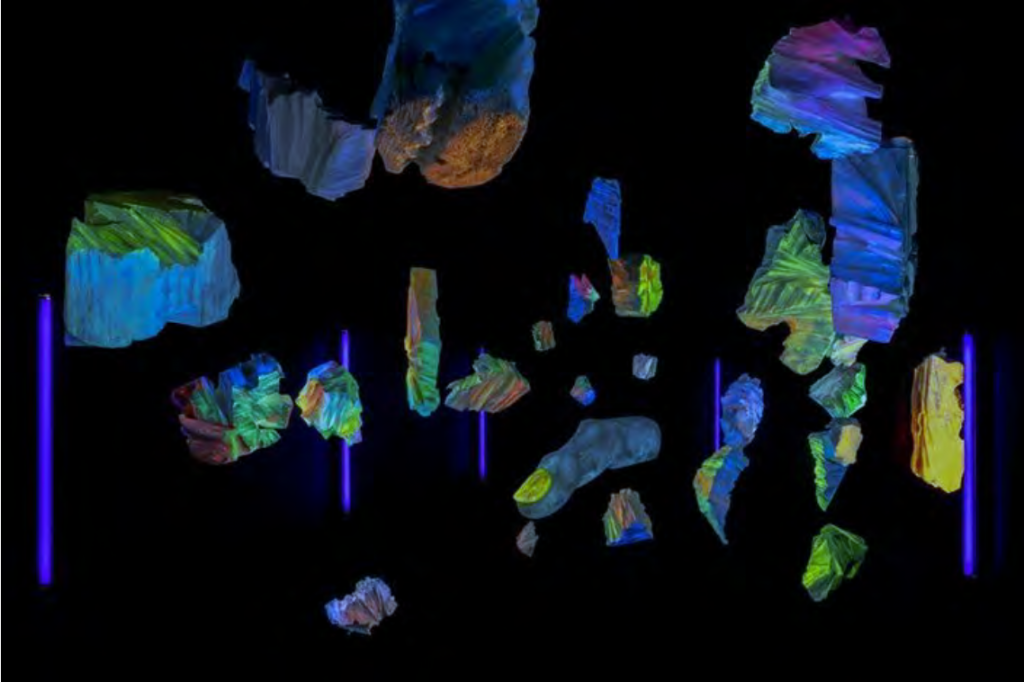
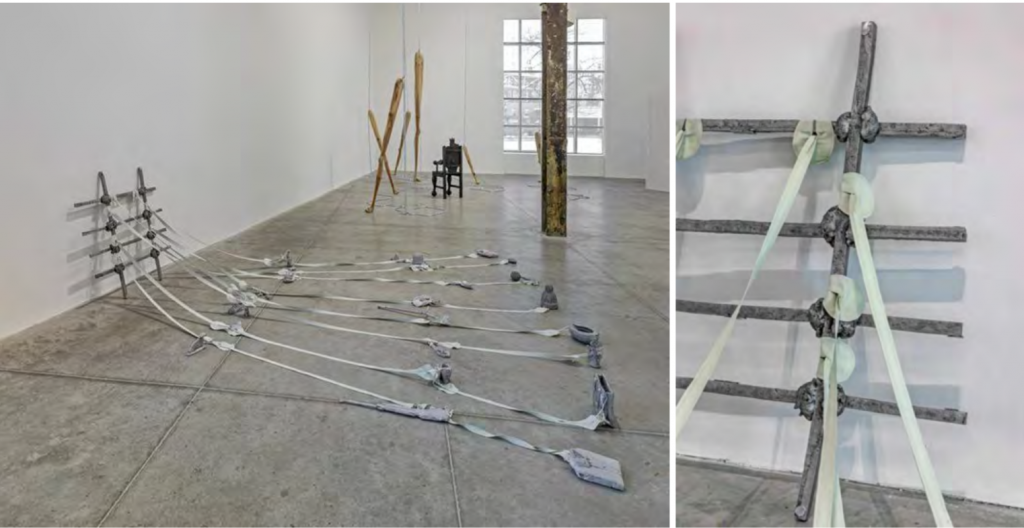
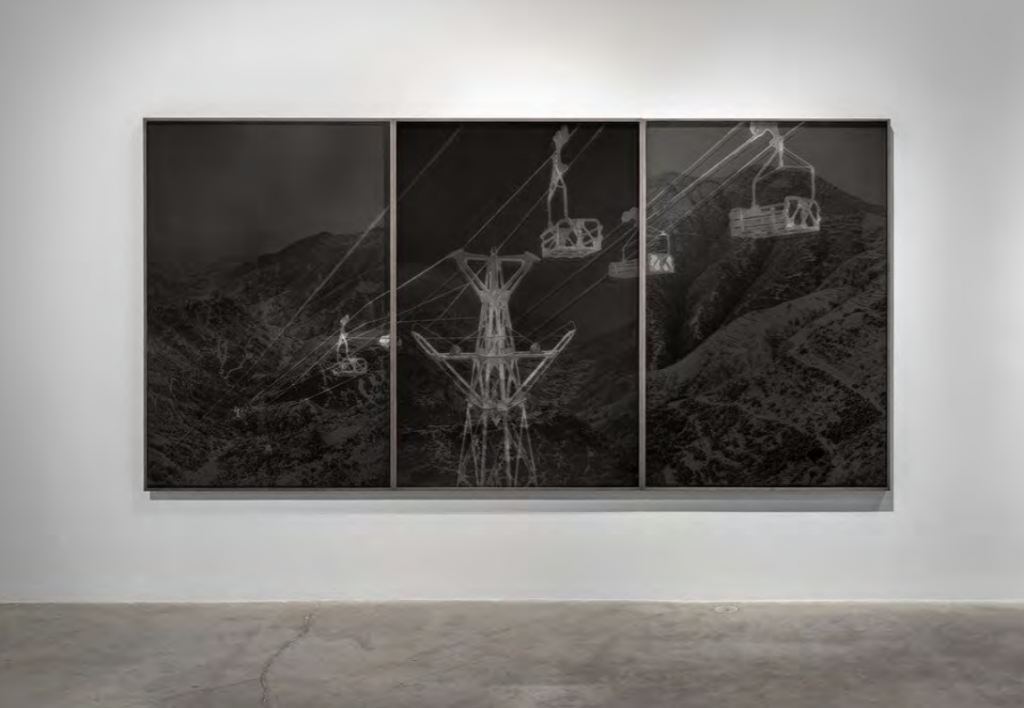
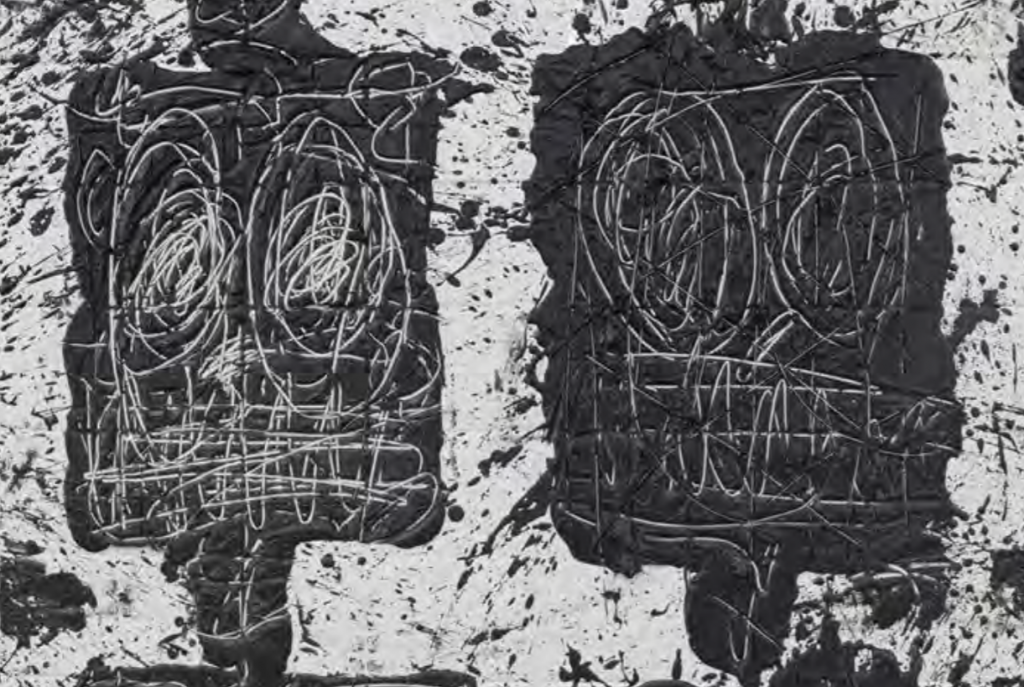
Laura Demers, TD Curator of Education and Outreach Fellow, wrote a series of prompts that were posted online, alongside close-up photos highlighting specific details in the four artworks. Viewers across the globe were invited to respond to these prompts, either by sharing their impressions in writing (stories, lists, poems, short paragraphs, or social media comments) or by engaging in small multi-sensory activities at home.
The downloadable PDF from the event is permanently posted on their website for participants to continue to use at their own pace.
Laura mentioned that the event was so well received that it produced over 350 new Instagram followers, and thousands of likes from the community across all of their social media accounts.
Josh Heuman, Curator of Education & Public Programs at The Power Plant, writes that:
“In little ways, this COVID-19 pandemic is pushing us to re-think how we might use online platforms to think beyond the four walls of The Power Plant.”
We are encouraged by the creative responses to the challenge of hosting virtual events during these difficult times, and look forward to The Power Plant’s continued participation in 2021.
– Johanna and Ashley

